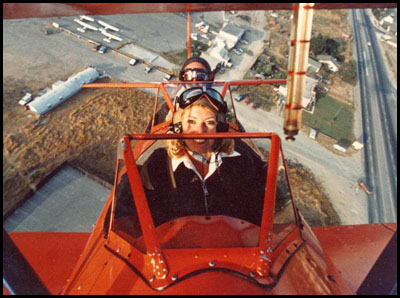Over the past few years, I’ve had discussions with various people — many of them pilots — on the subject of airport closures.
I see these closures as the biggest threat to general aviation. Even worse, they’re a sign of an ever more homogenized society in which anyone who has the temerity to want to fly must be either a dangerous lunatic who obviously hasn’t been taxed enough, or — the more understandable of the two possibilities — a terrorist.
A surprising number of my fellow aviators here in Southern California don’t seem to think there’s a problem, despite AOPA’s warning that airports are closing in this country at the rate of one per week. To be sure, some pilots just aren’t married to aviation the way I am, and don’t really care what happens to it. Especially if it happens after their flying days are over. If GA goes away, they’ll take up golf. Or speed walking. No skin off their backs.
But a larger percentage of those who slough off this issue probably just haven’t been around long enough to know just how many airports Orange County has lost. However, thanks to a tip from a fellow pilot, I’ve located a list of the airports that were in Orange County:
- Haster Field, Westminster
- Horse Farm NOLF, Stanton
- Huntington Beach Airport, Huntington Beach
- Meadowlark Airport, Huntington Beach
- Cypress Airfield, Anaheim
- Capistrano Airport, San Juan Capistrano
- El Toro MCAS, El Toro
- Mile Square NOLF, Garden Grove
- Balboa Airport, Newport Beach
- Palisades NOLF, Newport Beach
- Hangar City Airport (later Tustin MCAS)
- Fullerton Airport, Fullerton
- John Wayne Airport, Santa Ana
And here’s the list of airports that are still here:
An impressive list for a county with four million people. Aren’t we proud to be residents of Orange County? Yes, those strip malls and cookie-cutter homes provide a lot more character than this:

Wanna make a bet on how many airports will be in Orange County 20 years from now? I’m betting it’s zero. One, at best.
Fullerton is surrounded on all sides by dense commercial buildings and city streets. It’s only a matter of time until an accident happens, just as they happen on streets and freeways every day. The difference is, when an accident happens on the freeway, they never close the freeway. They just clean up the mess and reopen the highway.
Airports, on the other hand, are bulldozed after a single incident. That’s how Capistrano Airport was closed. And Fullerton just had a TriMotor replica crash outside the airport boundary this past summer. Believe me, it’s days are numbered.
John Wayne is threatened as well. There are extremely wealthy people living in Newport Beach who long ago forced the airport into a tightly structured agreement of limited hours and other restrictions that drive up ticket prices while forcing many airliners to leave the gates with empty seats. The agreement expires in 2020, after which there’s no doubt that the anti-airport forces will attempt to have the field bulldozed.
It’s understandable that urban sprawl will result in a few casualties, but this is ridiculous. Southern California is home to some of the most extensive and important aviation history on earth. But let’s set that aside. Our nation’s infrastructre is at stake. Getting rid of the airports is like getting rid of the roads, or the telephone lines, or the internet backbone. Airplanes are of no use without a place to land.
This phenomenon is not limited to Orange County. Los Angeles County’s finest GA airport, Agua Dulce, is in the process of voluntary closure. You can read the agreement yourself. Oh, it may say that the airport can remain open. But virtually no one will be allowed to land there. And those that are can only fly certain types of planes at very specific hours. No flight training. No transient traffic. No touch and gos. No helicopters. And the list goes on.
With 18,000 airports in the United States, this may not seem like a pressing issue. But the vast majority of those fields are private owned/private use landing strips in remote areas. It’s the general aviation airports in metropolitan areas that we need to preserve. And the time to get serious about it is long since past.
